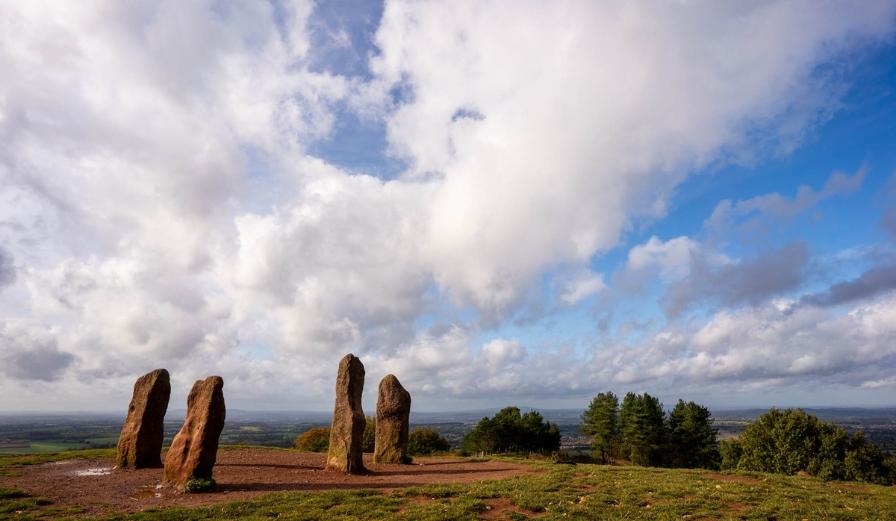A press visit organised by Visit Worcestershire.
The Clent Hills are a gloriously vertiginous patchwork of footpaths, deep forests, hidden ponds and challenging (read muddy) mountain bike trails that, at their summit, offer views out across the Cotswolds, Shropshire Hills and even as far as the Welsh borders.
Long a bucolic haven for the people of Birmingham and Wolverhampton, the standing stones I’m pacing around on a clear spring morning look utterly incongruous. Only five feet or so in height, they’re never likely to surpass Stonehenge with their diminutive form. Yet the story of how they came to be here is equally strange as their Somerset counterparts.

Erected around 1780 by a local aristocrat named Baron Lyttleton; history records that the sole reason for the stones being placed in their lofty position was to enrage the Baron’s neighbour, the Earl of Dudley. Famed for boasting that his estate was superior to Lyttleton’s because he could see no man-made structure in his view line, the stones were an act of picayune revenge which charm and confuse visitors today.
There’s a dose of mysticism running alongside the neighbourly malice too. Local legends speak of the stones becoming sentient and walking at midnight on mid-summers night to drink water to quench their year long thirst at nearby Walton Pool. If any visitor should see them on their annual migration then, so the story goes, they’re doomed to die a horrible death within the year.
My daylight amble means I’m thoroughly protected from marauding stones with ill intent, giving me peace of mind to gaze upon the small carpets of bluebells that have turned parts of the woodlands and meadows into florid sweeps of blue.
I’m not lucky enough to spot any of the small Muntjac deer- three roaming herds regularly pass through the Clent Hills. But the deep folds of beech, silver birch, oak and Scott’s pine trees make an atmospheric home for the chattering birdsong of the pipits and song thrushes.
The village of Clent itself is recorded in the Doomsday book and is a maze of tapering lanes, alms houses and hedgerows. The Ruskin Mill trust is located here, using the holistic philosophy of John Ruskin and William Morris as guidance for its educational work, part of which manifests in a farm shop selling biodynamic vegetables from their walled garden alongside local honey, lemonade and flour.
By far the best dining experience is just outside the village at the Bell and Cross pub. Here, amid a warren of small, cosy dining rooms, head chef Chris Dukes serves up an outstanding array of locally sourced dishes such as Wyre Forest venison ragu, three pin rack of lamb and a starter of peanut cauliflower wings with chilli sauce that I was having ardent dreams about for days afterwards.
Hogarth’s Stone Manor offers demure surroundings for a night’s sleep. A rambling, mock-Tudor pile designed by Edwin Thomas Hall, who also designed the Liberty’s department store in London, the walled gardens, oak beamed bar and rooms bedecked in shades of sage green are soothing rather than boldly eye-catching.
The vantage point from my bedroom window is ideal for a view of this oft-overlooked corner of the Midlands. And it’s a great spot for me to keep a wary eye on those pesky standing stones…
Words by Rob Crossan





